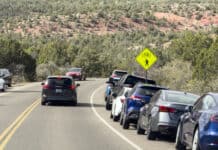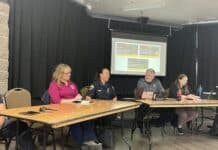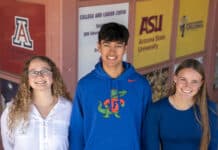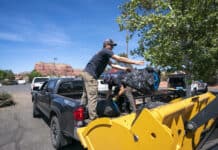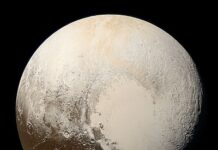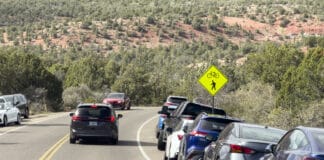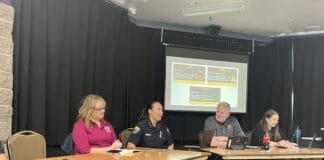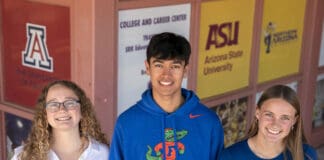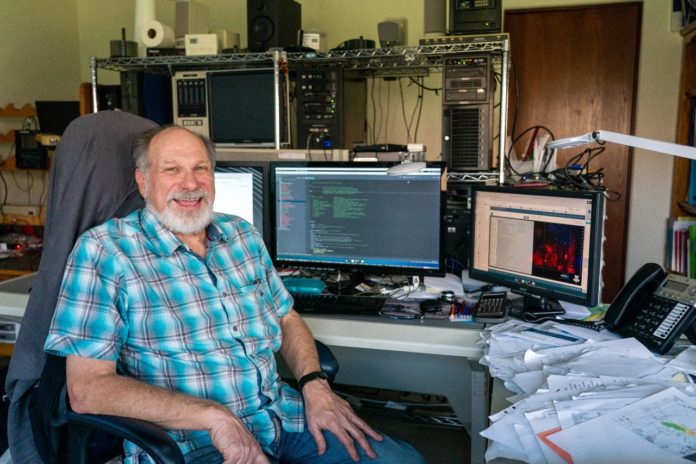
A 3.9-mile-wide rock about 239 million miles from the sun now has a connection to Sedona.
Robert Schottland has an insatiable thirst for knowledge.
He graduated from Northwestern University in 1966 as an industrial engineer and has been the owner of his own software consulting business for the last 30 years. He says he thinks like an engineer but is more passionate about computer technology and where it appears to be going.
He said his consulting is a constant learning experience.
“I have to learn a lot about my client’s business to help them grow and thrive. People pay tuition to take courses to educate themselves, consultants gain knowledge from their clients, and I get paid for that. At age 73, my work gets better and better.”
Family History
Rob’s grandfather, Benjamin Schottland, was born in Russia and immigrated to the U.S. in 1890. His uncle Michael was a toddler at the time.
“It was a classic immigrant story,” Rob said. My grandfather and uncle created a business manufacturing mirrors in New York City — it was the only one in the world. They decided to move it to the furniture capital of the south — North Carolina — and ended up in Martinsville, Va., where they founded the Virginia Mirror Company. That company is still in existence today.”
In 1939, Michael Schottland contacted J.W. Fecker, an amateur telescope maker and one of the first to master the construction of the Schmidt camera. Schottland wanted to purchase a telescope but learned that the telescopes available were commercial-grade and not for amateurs.
Fecker required a $250,000 deposit, with 50% down, the telescope had to be delivered and installed and he also needed to know the latitude of the property and get the altitude from the North Star. The only disadvantage was that there was no eyepiece. Film had to be installed inside the telescope allowing for snapshots of the night sky.
“The telescope took 18 months to build, and it had to be custom-built to function at the right longitude and latitude in Martinsville where my uncle designed an observatory to house the telescope,” Rob Schottland said.
Schottland used that telescope for about 10 years before deciding to upgrade to a larger model, the Schmidt Cassegrain Telescope, and donated his first telescope to Perkins Observatory in Delaware, Ohio, where it sat unused for 40 years.
Tracking Down Telescopes
“While I was researching my family name, I came across the Schottland Telescope in Ohio. I called Perkins only to find out that my uncle donated a telescope to the observatory — but it wasn’t the same telescope that I was inquiring about.”
After discovering that there were two telescopes, Rob Schottland tracked the other at Lowell Observatory in Flagstaff. Upon his investigation, he found that Ralph Nye, a legendary telescope builder and engineer at Lowell, had picked up the Schmidt Camera Telescope at Perkins.
They took it apart and reassembled it creating the LONEOS — Lowell Observatory Near-Earth- Object Search — a NASA-funded project designed to hunt for asteroids and comets orbiting near Earth. By process of elimination, Schottland determined that this was his uncle’s telescope.
“I went to Ralph Nye and asked him if he knew who the previous owner of this telescope was. He reached for some blueprints and unraveled them. The drawings revealed the angle of the wedge on the telescope with the exact latitude. The latitude was Martinsville, Va. The second drawing they found written in the margin, ‘MSchottland, Martinsville, Va,’ and we knew positively that the LONEOS was Mike Schottland’s original telescope.”
The LONEOS program began in 1993 and ran until the end of February 2008, and over 22,000 asteroids and 42 comets were discovered by it.
Nye concluded that since the LONEOS was Michael Schottland’s telescope, which discovered many asteroids, he deserved to have an asteroid named after him. On June 3, 2015, Asteroid 25940 Mikeschottland = 2001 ET5, found March 2, 2001, from the Anderson Mesa Station, was named in honor of Michael Schottland, the original owner, and donor of the astrograph.
On June 10, 2021, Rob Schottland had an asteroid named in his honor. To his surprise, “Asteroid 46076 Robertschottland = 2001 EH4” was named for his significant contributions to projects at Lowell Observatory.
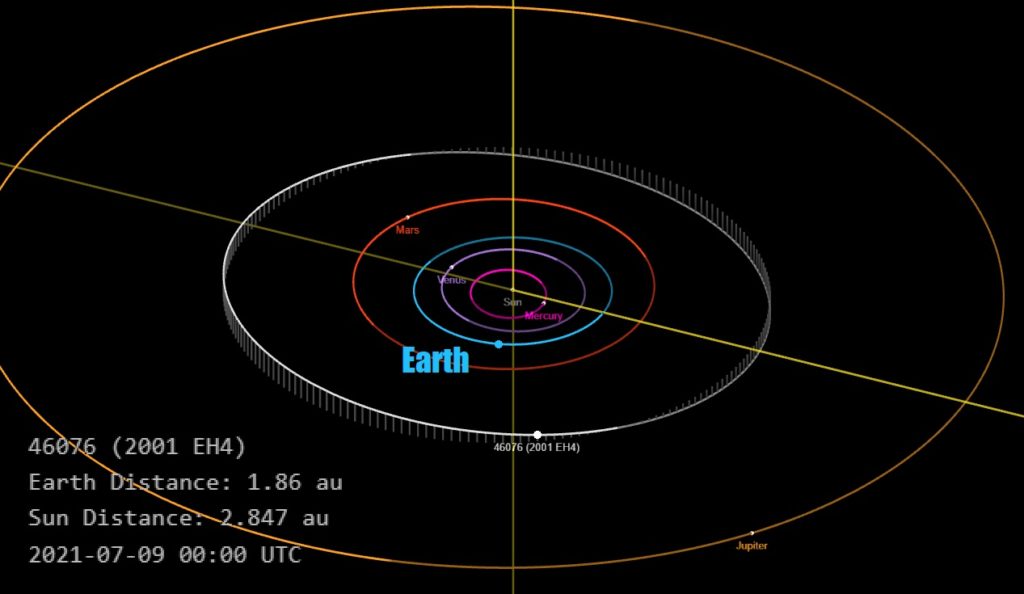
All proposed names are judged by the 15-person Working Group for Small Body Nomenclature of the International Astronomical Union.
For the last seven years, Schottland has been consulting for Lowell Observatory with its NASA grant, creating databases, backend programs and learning a ton of astronomy, he said. However, he occasionally uses his telescope and is more intrigued about the science and technology of the solar system than looking at it through a lens. Yet, he’s grateful to Lowell for honoring his family’s legacy.
“Ten years before I got involved with Lowell, I was trying to figure out why there was a Schottland telescope in Ohio,” he said. “To find out that a different telescope from the same place in Ohio turned out to be my uncle’s telescope and what great discoveries occurred because of it is uncanny. If Michael Schottland only knew what his telescope accomplished, he would be over the moon.”


